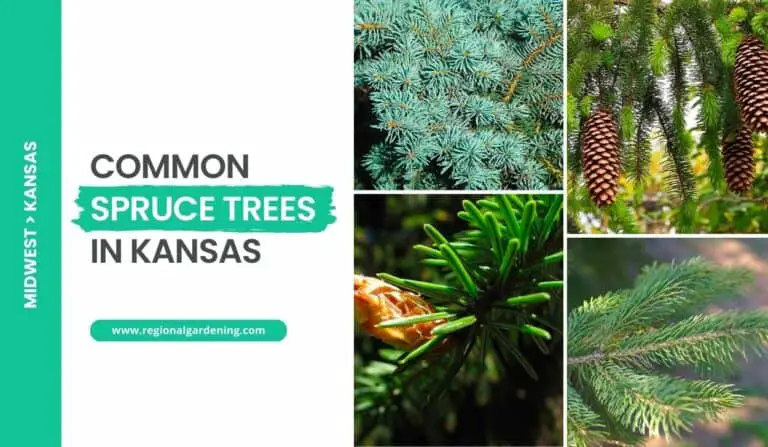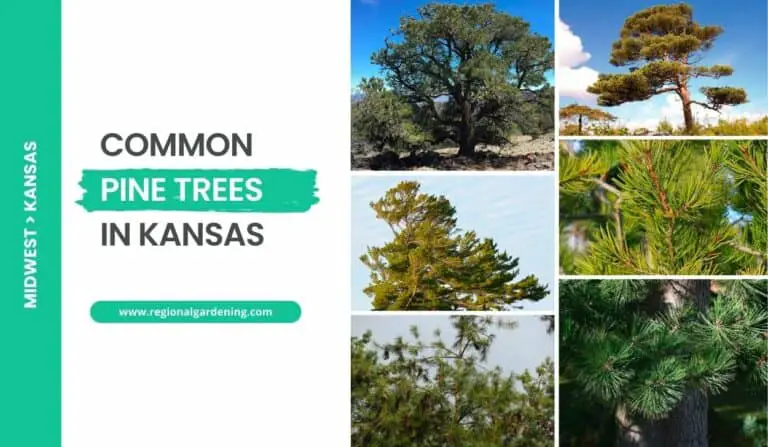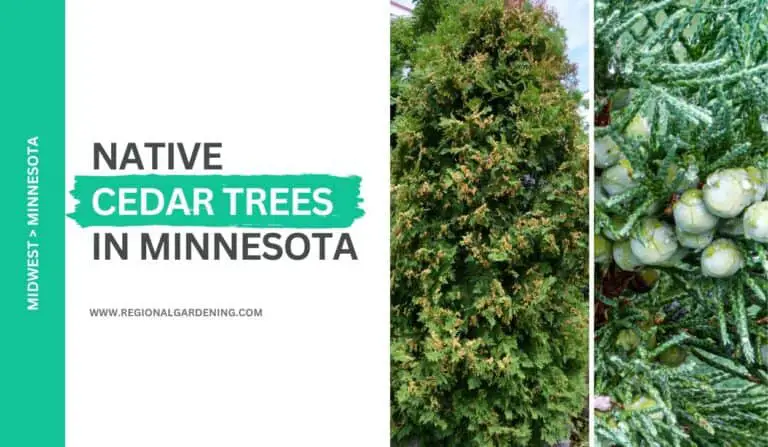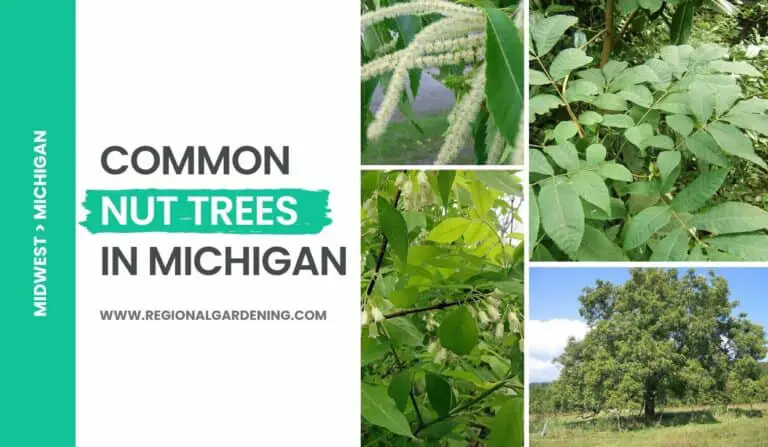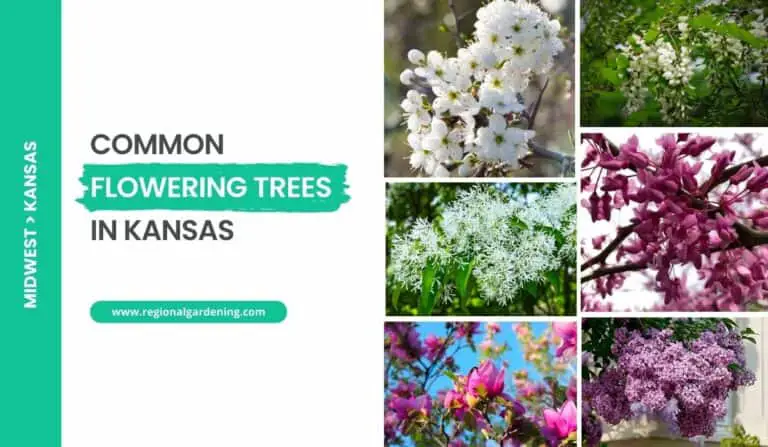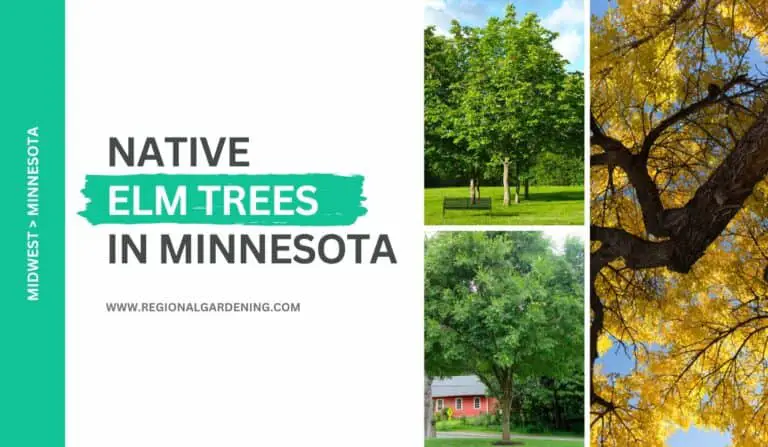5 Common Hickory Trees In Kansas (Photos & Identification)

The sprawling woodlands of Kansas are home to a plethora of fascinating trees, each with its own distinct characteristics. Among the native trees that call this state home, hickory trees stand out.
Hickory trees, with their strong, hardwood trunks and lush foliage, provide both natural beauty and important ecological contributions.
In this article, we will explore five common hickory trees in Kansas, providing you with captivating photos and detailed descriptions of how to identify them.
Let’s begin.
1. Shagbark Hickory
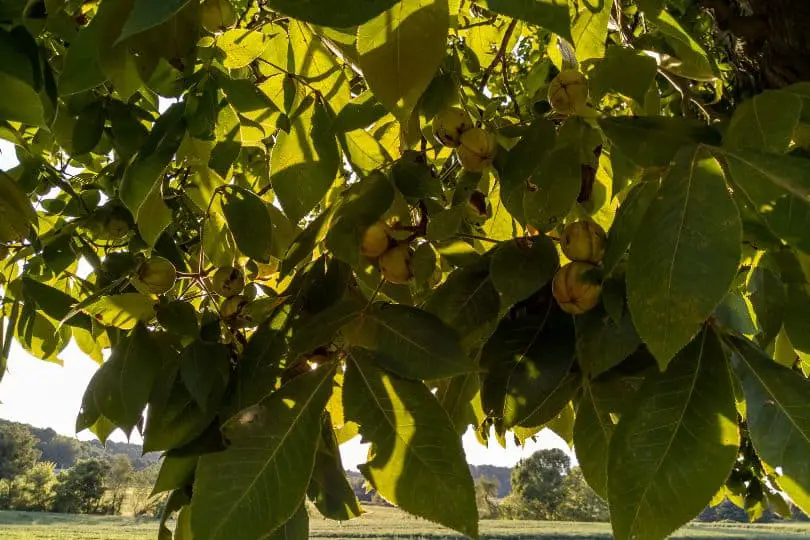
- Scientific Name: Carya ovata
- Common Name(s): Shagbark Hickory
- Mature Height: 60–80 feet (18–24 meters)
- Native Region: North America
- Flowers: No flowers.
- Fruit: Large, round nuts with thick shells.
- Uses: The wood of the Shagbark Hickory is highly valued for its strength and durability, making it popular for furniture, flooring, and tool handles. The nuts are edible and are often used in baking and cooking. The tree is also planted for its ornamental value and provides shade in landscapes.
Carya ovata (Shagbark Hickory) is a huge deciduous tree endemic to North America, including Kansas. It gets its common name from its distinctive shaggy bark that peels away in big sections. The mature height of the tree is 60 to 80 feet (18 to 24 meters) with a rounded crown and a spread of 40 to 60 feet (12 to 18 meters).
The leaves of the Shagbark Hickory are complex, with five to seven lance-shaped and pointed leaflets. The leaflets are dark green in hue and turn yellow in the autumn, making for a lovely display of autumn foliage. The tree’s bark is light gray and shaggy as it ages, with long strips peeling away from the trunk.
Shagbark Hickory is mostly found in eastern and central North America, including Kansas. It thrives in a wide range of environments, including woods, woodlands, and riverbanks. The Shagbark Hickory flourishes in moist, well-drained soils in Kansas settings, but it can survive a wide range of soil types.
The Shagbark Hickory is monoecious, meaning it has male and female blooms on the same tree. The tree, however, does not produce showy blossoms. Catkins, which are long, slender clusters of yellowish-green male flowers, are produced instead. Female flowers are little and unnoticeable. The tree is pollinated by the wind.
The Shagbark Hickory fruit is a huge, spherical nut with a thick, hard shell. The nuts ripen in the fall and provide a vital source of food for wildlife, especially squirrels. Humans harvest the nuts for a variety of culinary reasons, including as baking and cooking. Shagbark Hickory wood is widely recognized for its strength and durability, making it an attractive choice for furniture, flooring, and tool handles.
Shagbark Hickory is commonly planted in Kansas landscapes due to its appealing appearance and capacity to give shade. It is a hardy tree that can endure a variety of environmental circumstances, including drought and flooding. The tree prefers full sun but may take partial shade. Because of its size, it is best suited for larger landscapes.
2. Shellbark Hickory
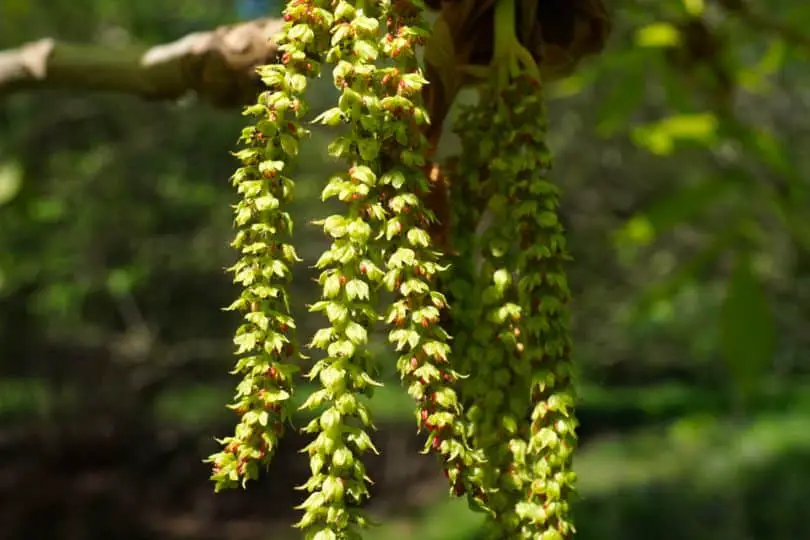
- Scientific Name: Carya laciniosa
- Common Name(s): Shellbark Hickory
- Mature Height: 70-90 feet (21-27 meters)
- Native Region: Eastern and Central North America
- Flowers: Small greenish-yellow flowers in spring
- Fruit: Large, oval-shaped nuts with thick shells
- Uses: The wood is used for a variety of purposes including furniture, flooring, and tool handles. The nuts are edible and are often used in baking and cooking.
The Shellbark Hickory is a huge deciduous tree that can grow to be 70-90 feet (21-27 meters) tall when mature. Its original range includes eastern and central North America, including Kansas. The tree is distinguished by its characteristic shaggy bark, which peels away in long, vertical strips, giving it a distinct appearance.
Shellbark Hickory leaves are complex, with five to seven leaflets that are 3-7 inches long. They are dark green in color and turn golden-yellow in the fall, making for stunning autumn colors in Kansas settings. Shellbark Hickory nuts are huge and have thick shells. They are oval in appearance and can grow to reach 2 inches long. The nuts have a deep, sweet flavor and are edible. They are frequently used in baking and cooking, as well as roasted.
The Shellbark Hickory grows in a number of environments in Kansas, including woods, woodlands, and along rivers and streams. It prefers well-drained soils but may grow in a variety of soil types, from sandy to clay. It is a slow-growing tree that can live for hundreds of years.
The Shellbark Hickory is an important tree in Kansas landscapes. It is an appealing ornamental tree due to its big size and gorgeous shaggy bark. Shellbark Hickory wood is also highly prized for its strength and durability. It’s widely used to make furniture, flooring, and tool handles.
Furthermore, the Shellbark Hickory’s nuts have both cultural and gastronomic applications. For millennia, they have been a vital food source for Native American tribes, and they are still gathered and used today. The nuts are frequently used in baking and cooking to provide a distinct flavor and texture to foods. They are very popular as a snack, both raw and roasted.
3. Bitternut Hickory
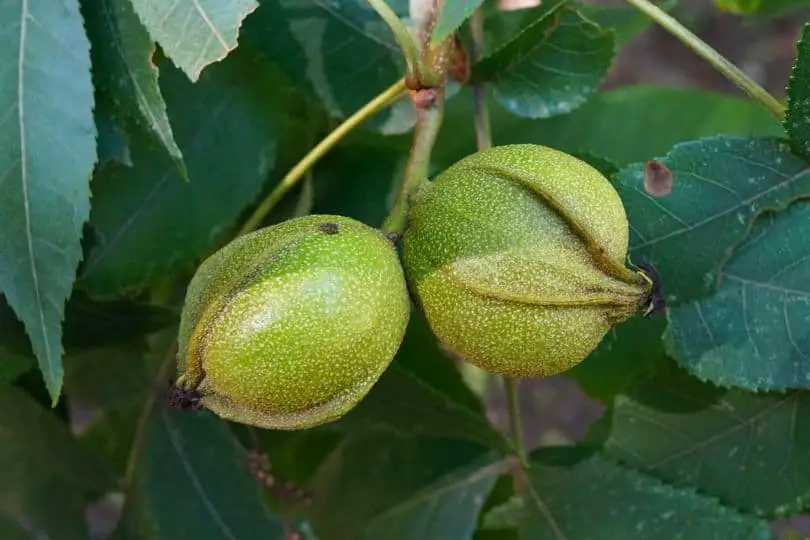
- Scientific Name: Carya cordiformis
- Common Name(s): Bitternut Hickory
- Mature Height: 50-80 feet (15-24 meters)
- Native Region: Eastern North America
- Flowers: No flowers.
- Fruit: Small, pear-shaped nuts enclosed in a thin husk.
- Uses: The wood of the Bitternut Hickory is used in the production of furniture, tool handles, and flooring. The nuts are eaten by wildlife, and can also be consumed by humans.
The Bitternut Hickory, scientifically known as Carya cordiformis, is a medium to large-sized tree that can reach a mature height of 50 to 80 feet (15 to 24 meters). It is native to eastern North America and can be found across the state of Kansas.
The leaves of this hickory tree are pinnately compound with 7 to 11 leaflets, and the bark is light gray and smooth when young, turning light brown with shallow furrows as it ages. Bitternut Hickory grows in a wide range of soil types, including loamy, sandy, and clay-based soils, making it well-suited to Kansas landscapes.
Although it lacks attractive blossoms, the Bitternut Hickory yields small, pear-shaped nuts encased in a thin husk. Both wildlife and humans can eat these nuts. They taste bitter, thus the name “Bitternut.” The nuts are a vital food source for many species in nature, including squirrels and birds.
This hickory tree can be found in forests, woodlands, and along riverbanks and is tolerant of a variety of growth situations. It prefers full sun to partial shade and needs enough of water to thrive. Bitternut Hickory can be a wonderful addition to the landscape in Kansas, providing shade and attracting wildlife.
Bitternut Hickory wood is highly prized for its strength and durability. It’s often used to make furniture, tool handles, flooring, and even recreational products like baseball bats. Humans can also harvest and consume its nuts, albeit their bitter flavor may not be to everyone’s liking.
4. Black Hickory
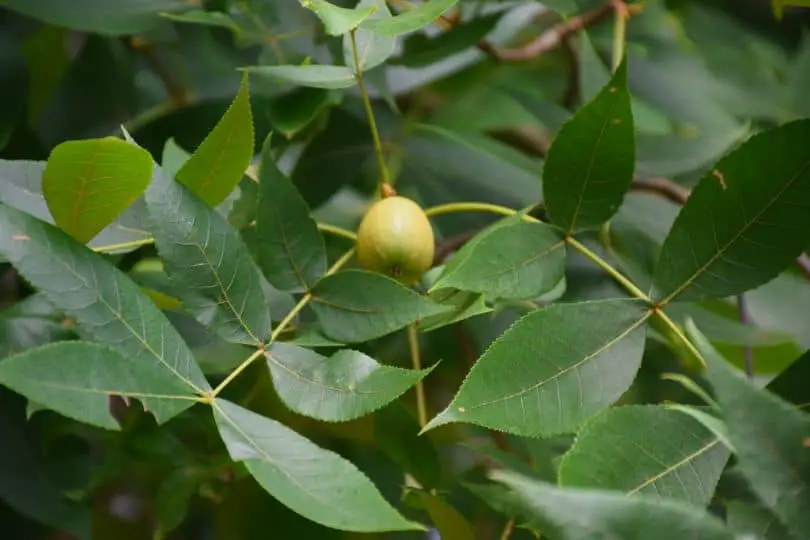
- Scientific Name: Carya texana
- Common Name(s): Black Hickory, Western Pignut Hickory
- Mature Height: 30-50 feet (9-15 meters)
- Native Region: Southeastern United States, including Kansas
- Flowers: No Flowers
- Fruit: Small nuts with thick husks
- Uses: The wood of Black Hickory is used for tool handles, furniture, and fuel.
The Black Hickory, also known as the Western Pignut Hickory, is a medium-sized tree that can grow to be 30 to 50 feet tall. It is native to the United States’ southeast region, including Kansas. Black Hickory leaves are alternating, complex, and deciduous. They are typically 8 to 13 inches long and have 5 to 9 leaflets. With age, the bark turns grayish-brown and becomes rough and shaggy.
Black Hickory is commonly found in dry highland woods, forested slopes, and rocky places in Kansas. It may grow in a variety of soil types, from sandy to clay-like. It does, however, prefer well-drained soils. This hickory species has a deep taproot, allowing it to reach water and nutrients deep within the earth. It can also endure drought and is resistant to illnesses and pests.
Flowers of Black Hickory are not particularly showy. It instead yields little nuts with thick husks. Both humans and animals can cook or roast the nuts, which are a valuable food source for wildlife. Black hickory wood is sturdy and resilient, making it ideal for tool handles, furniture, and fuel.
Black Hickory is commonly used in landscape design in Kansas to provide shade and wildlife habitat. Because of its deep taproot, it is an excellent tree for erosion control and slope stabilization. Furthermore, the tree’s nuts provide an important food source for wildlife, attracting birds and small mammals to the area. Its wood is also harvested for a variety of applications, such as furniture and firewood.
5. Mockernut Hickory
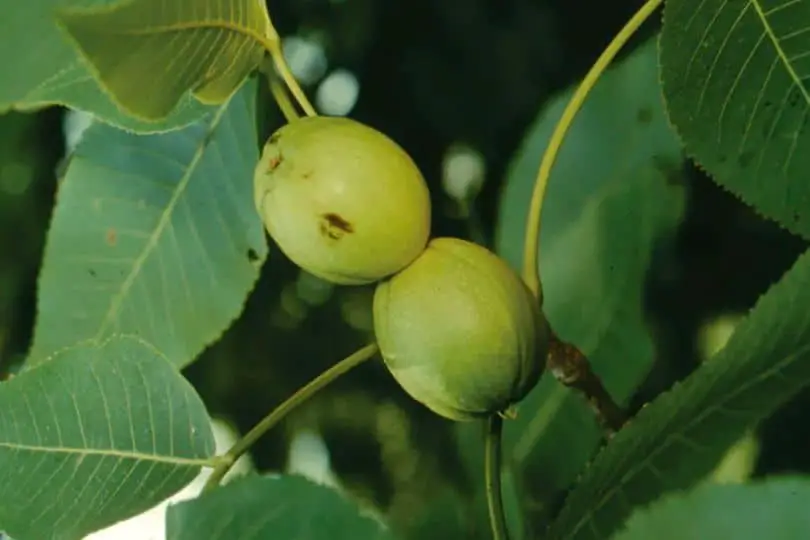
- Scientific Name: Carya tomentosa
- Common Name(s): Mockernut Hickory, White Hickory, Bullnut
- Mature Height: 60-80 feet (18-24 meters)
- Native Region: Eastern North America
- Flowers: No Flowers
- Fruit: Oval-shaped nuts with thick husks
- Uses: Mockernut hickory wood is used for furniture making, tool handles, and fuel. Both wildlife and humans can eat the nuts.
The Mockernut Hickory (Carya tomentosa) is a tall deciduous tree that can grow to heights of 60-80 feet (18-24 meters). It is most typically seen in North America’s eastern region. The tree does not produce blossoms, but it does produce fruit in the form of oval-shaped nuts with thick husks.
The Mockernut Hickory is distinguished by its highly furrowed bark, which is grayish-brown in hue. The leaves are pinnately complex, which means they have numerous leaflets. These leaflets have a dark green top and a lighter underside. Mockernut is the colloquial name for the tree’s big, thick-shelled nuts, which are occasionally mistaken for hickory nuts.
The Mockernut Hickory grows well in Kansas landscapes. It may thrive in both highland and bottomland locations and can endure a wide range of soil conditions, from moist to dry. It prefers full sun but may tolerate moderate shade. However, in shadier situations, it may not reach its full height.
The Mockernut Hickory is widely found in Kansas forests and along streams. Because the nuts are devoured by many creatures such as squirrels, deer, and birds, it provides vital habitat and food source for wildlife. Mockernut Hickory wood is firm and sturdy, making it useful for furniture, tool handles, and fuel.
Similar Articles
- Common Flowering Trees In Kansas
- Common Pine Trees In Kansas
- Common Oak Trees In Kansas
- Common Ash Trees In Kansas
- Common Maple Trees In Kansas
- Common Cedar Trees In Kansas
- Common Locust Trees In Kansas
- Common Cherry Trees In Kansas
- Common Cottonwood Trees In Kansas
- Common Elm Trees In Kansas
- Common Juniper Trees In Kansas
- Common Cypress Trees In Kansas
- Common Spruce Trees In Kansas
Common Hickory Trees In Kansas – Sources
The Regional Gardening team makes sure that the information in our articles is accurate by only using sources that are known to be trustworthy. Some of these sources are peer-reviewed journals from government agencies, well-known universities, and scientific research organizations.
- Recommended Plants & Trees For Kansas, Kansas State University
- Native Tree Identification, Kansas Native Plant Society
- Discover Kansas Forests, Kansas Forest Service
- Preferred Trees for Southwest Kansas, Kansas State University


